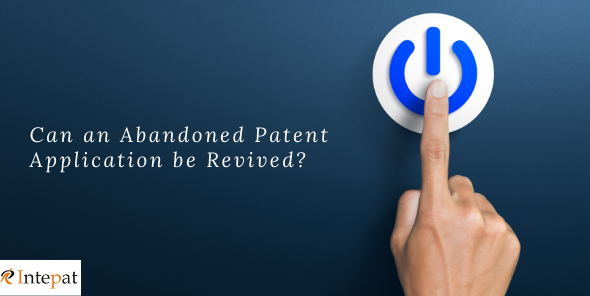An application for a patent is said to have been abandoned if it is no longer pending, which means that the application has hit a point where it can no longer be matured into a successfully registered patent. In India, Section 9(1) of the Patents Act, 1970 (“Act”) discusses what exactly qualifies as an abandoned application as per domestic law. As per the Section, any application for patent registration, which is not a convention application or an application under the Patent Cooperation Treaty, for which a provisional specification is filed but a complete specification is not filed for it within a period of 12 months from the date of application, then such application is deemed to be an abandoned application.
Additionally, Section 21(1) of the Act also discusses that an application may be deemed to be abandoned if the applicant fails to comply with the conditions prescribed in the Act. The section refers to conditions that may relate to complete specifications or in connection to the application itself from the date wherein the first set of objections is notified to the applicant by the Controller General of Patents (“Controller”). Upon notification, the applicant is expected to reply to the objections within six months, or the applicant can take an extension of another 3 months for filing of the reply. If the applicant fails to file a reply to the objections, the application is deemed to be abandoned.
In the USPTO, an abandoned patent application can be revived by filing a petition for revival of the abandoned application. Revival of the abandoned application is easier if a petition is filed as soon as possible after the abandonment is declared. However, the petitioner has to prove that the abandonment was not a result of any intentional acts of the petitioner. A fee for revival also has to be paid post the filing of the petition, and this is to be followed by remedying the situation that caused the abandonment in the first instance.
In India, an application for a patent, once abandoned, as discussed in Sections 9(1) and 21(1) of the Act, cannot be revived as per the law. Unlike the American scenario, Indian statutes do not discuss a situation where it is to be examined whether the abandonment was intentional or unintentional. The courts, however, have been more liberal than the legislation and have discussed the issue of deemed abandonment more flexibly.
An interesting aspect in this regard was discussed in the case of Universidad Politechnica De Valencia v. Union of India & Ors. [WP (C) 1435 of 2007], wherein the Bombay High Court delivered a ruling regarding the discretion of the Controller to declare an application to be deemed as abandoned by reading together Section 21(1) and Section 80 of the Act. The Division Bench of the Bombay High Court, in this case, ruled that the discretionary powers of the Controllers are subject to the provisions regarding fair hearing, and the petitioners, therefore, should be given a hearing before deeming their application as abandoned.
Additionally, in the case of Telefonaktiebolaget LM Ericsson v. Union of India & Ors [WP (C) 9126 of 2009] to the patent application of the petitioner had been “deemed to be abandoned” as per Section 21(1) of the Act, but the single-judge bench of the Delhi High Court in 2011 ruled that to deem an application to have been abandoned, there must be some conscious or manifest act by the petitioner that displays the intention to abandon the application.
A similar position was also taken by the Intellectual Property Appellate Board (“IPAB”) in the case of Rubicon Research Pty Ltd. v. The Controller General of Patents & Ors. [OA/18/2014/PT/KOL]. In this case, the agents of the applicants had not informed the applicants of the fact that as per Section 60 of the Act, for restoration of patent, if they failed to pay the renewal fee for the payment within the stipulated time of 6 months, their patent would be seen as abandoned. Later, when the applicants employed a new set of agents to work on their renewal application, they tried to remedy the situation, but six months had passed by then, and the application was deemed abandoned. The IPAB, post considering the facts at hand, discussed the powers of the Controller under Rule 137 of the Patent Rules, 2003 and held that the lapse of the patent was not a result of the manifest intention of the applicants and if their patent were considered as abandoned, they would be made to suffer unreasonably. Therefore, the order of the Controller was set aside by the IPAB, and the applicants were given a chance to successfully restore their patent.
Therefore, it can be said that in the absence of an intentional abandonment of the application, the applicants have some recourse in the Courts if they can prove that there was no intention to abandon the application on their part or that their application has been wrongly deemed as abandoned.
Author: Mansi Tiwari, Interns @IntepatIP




